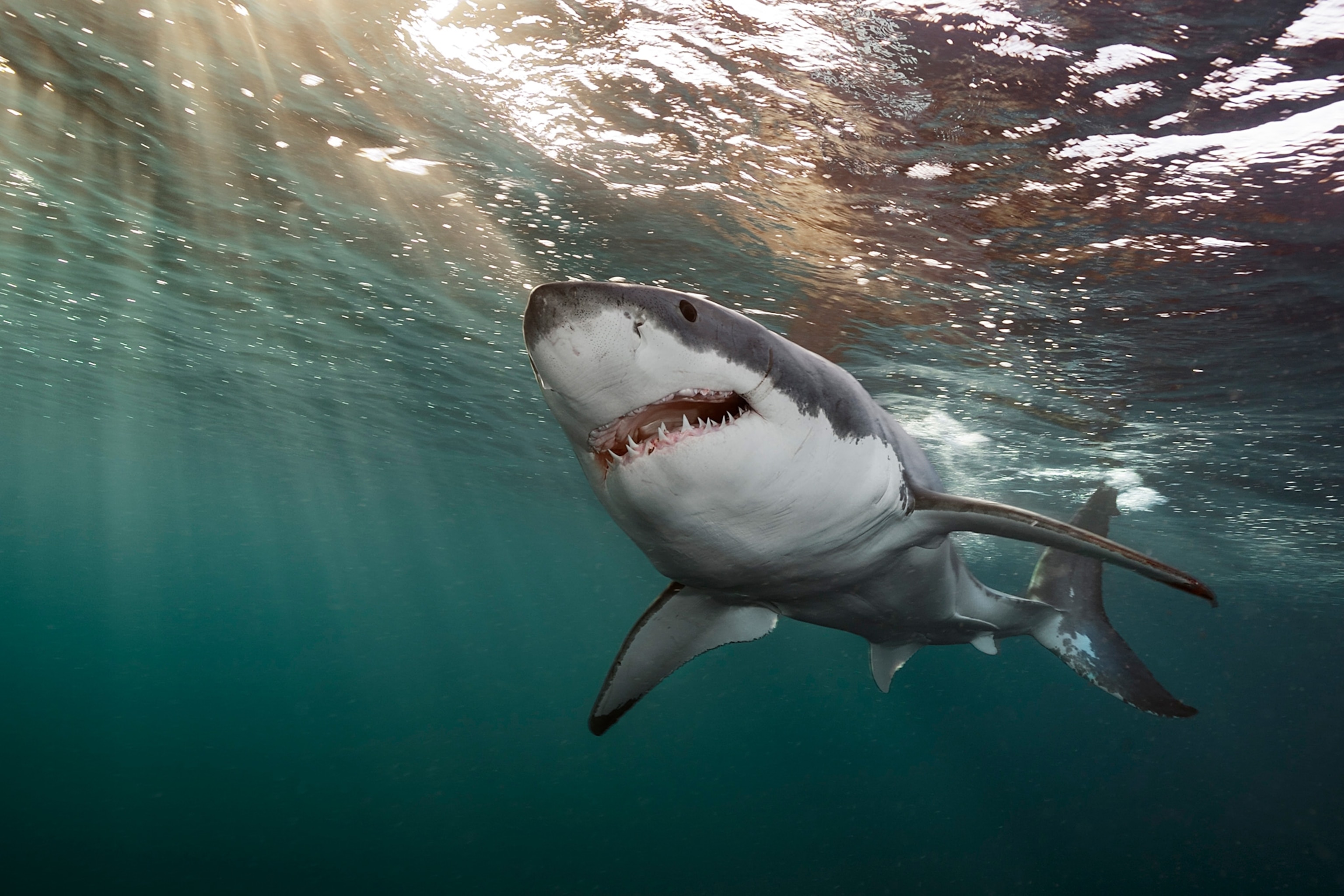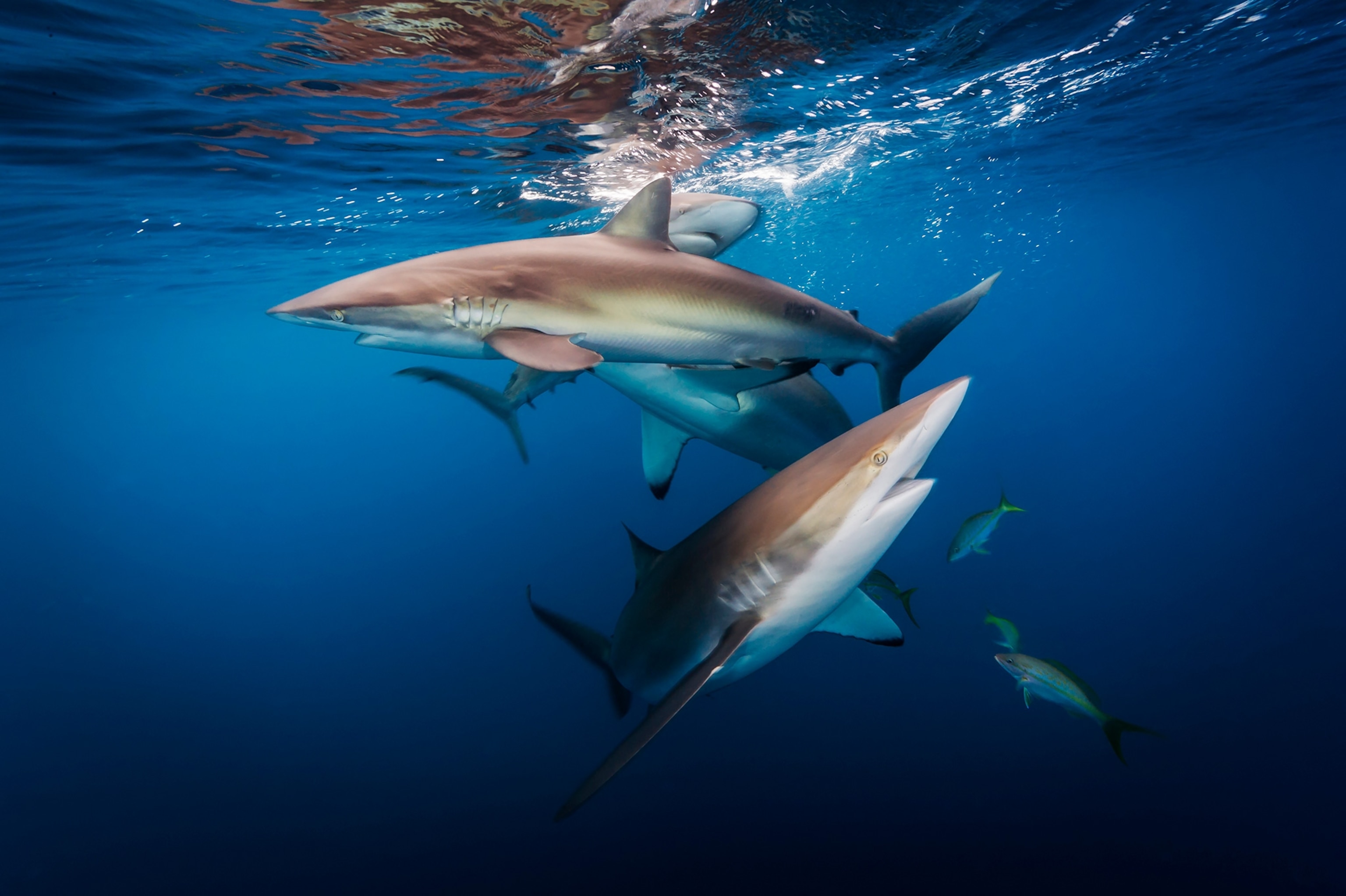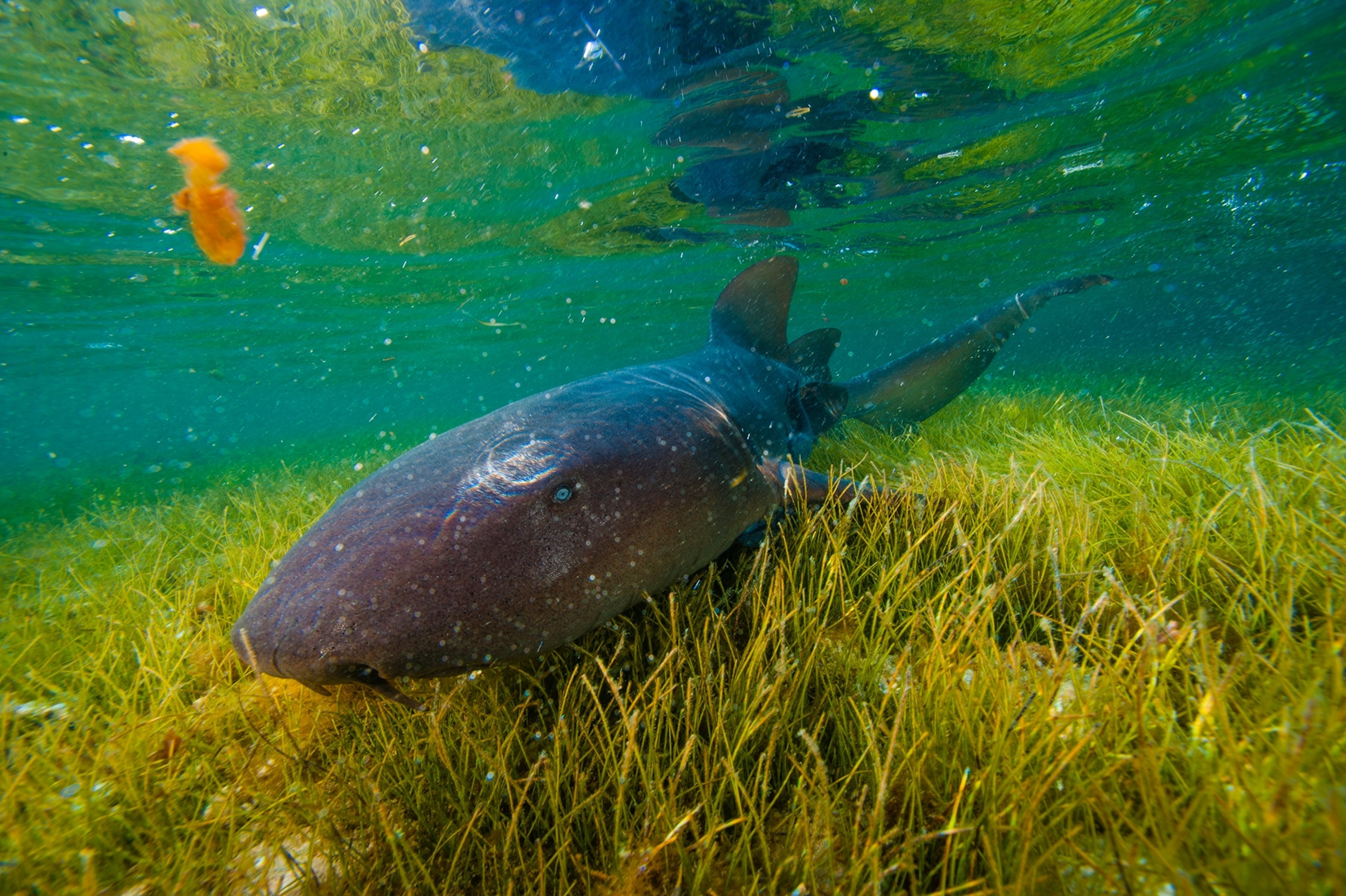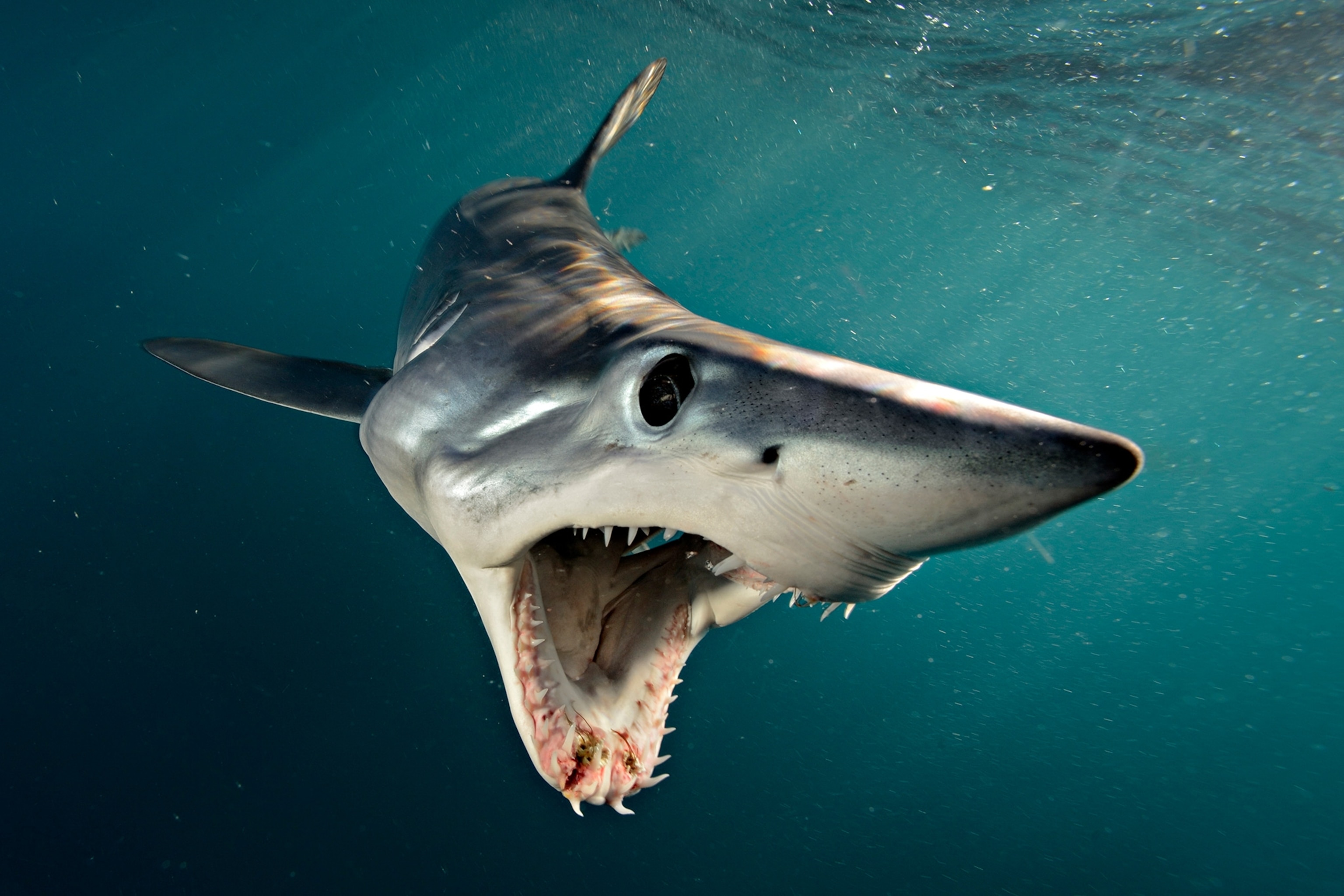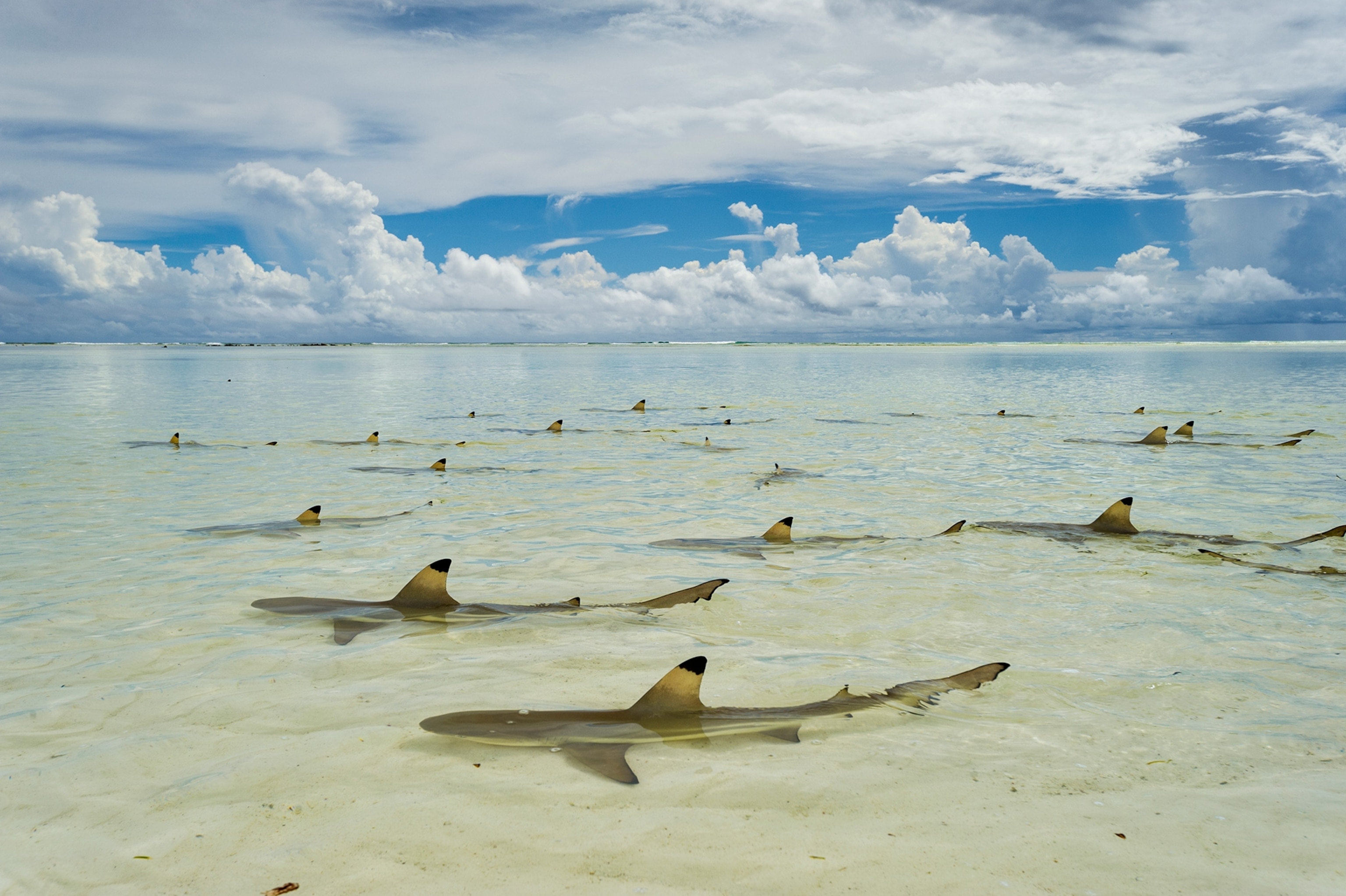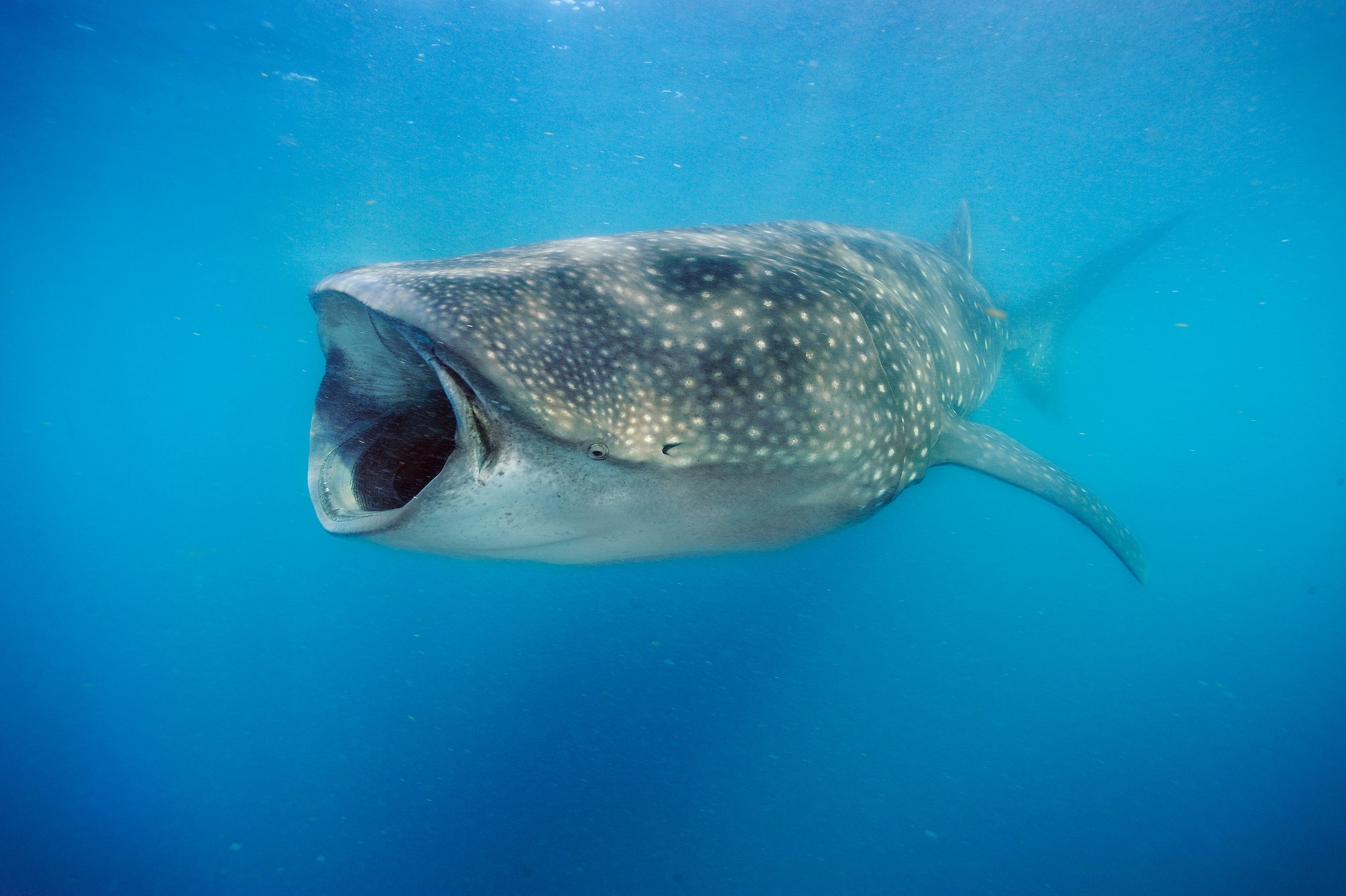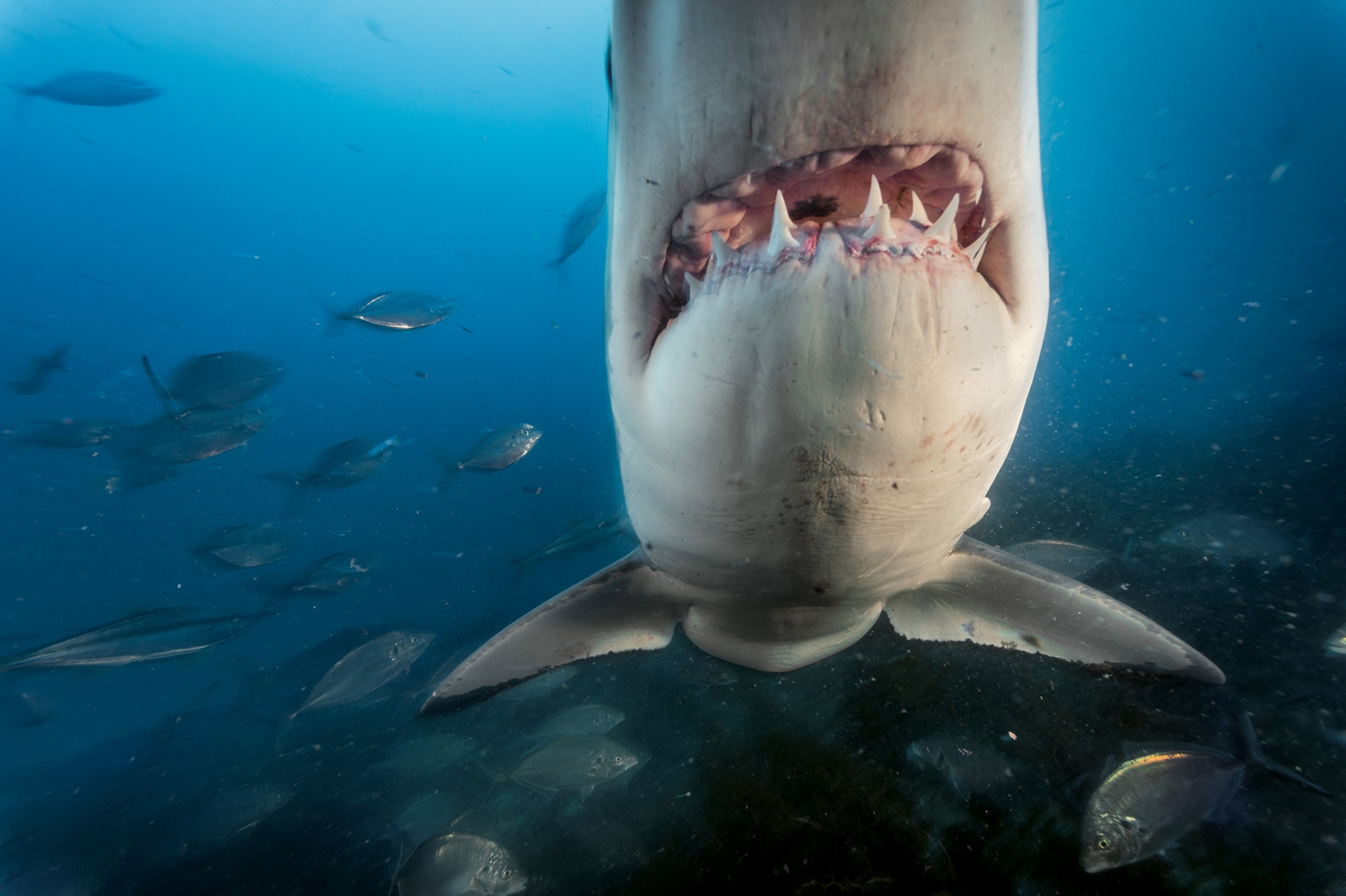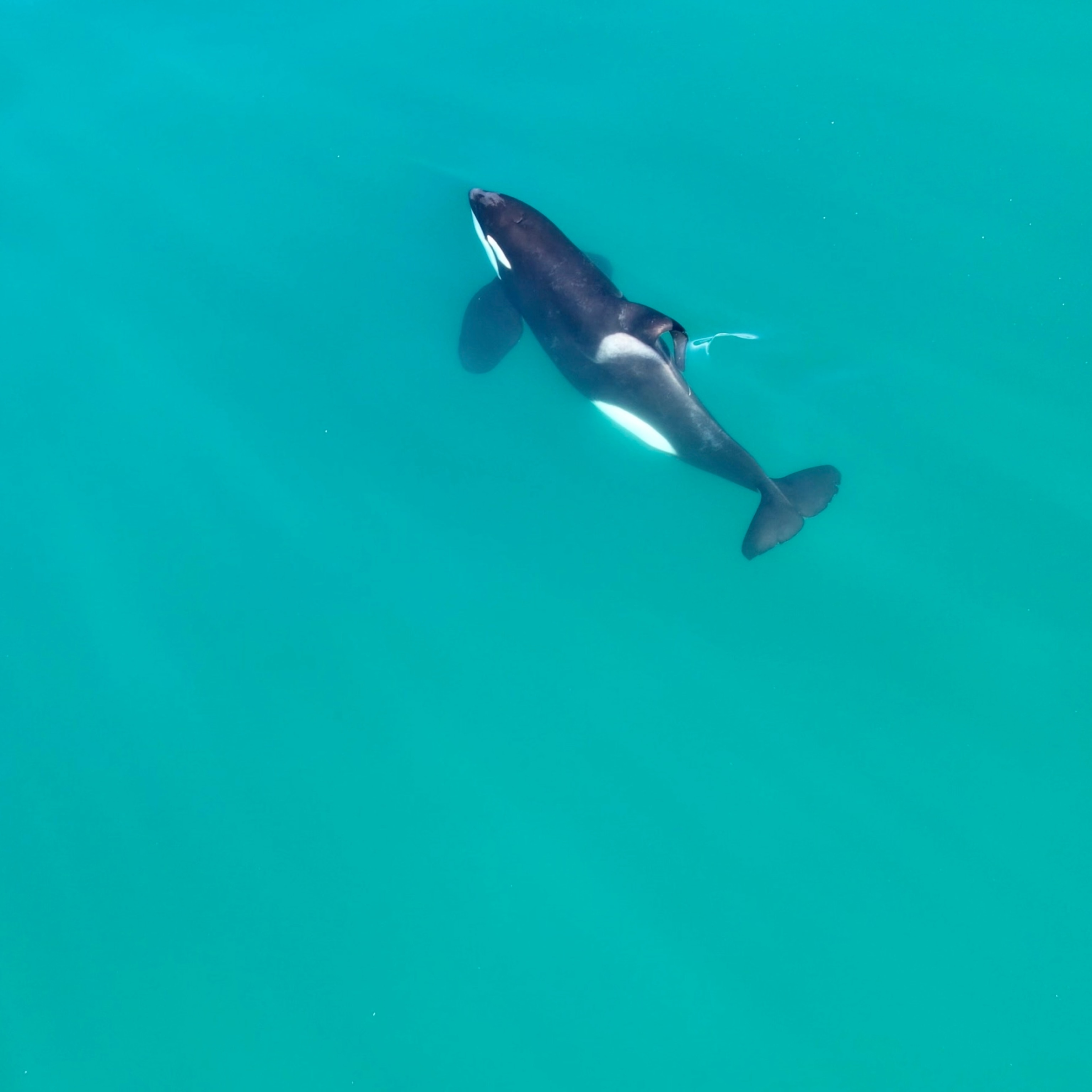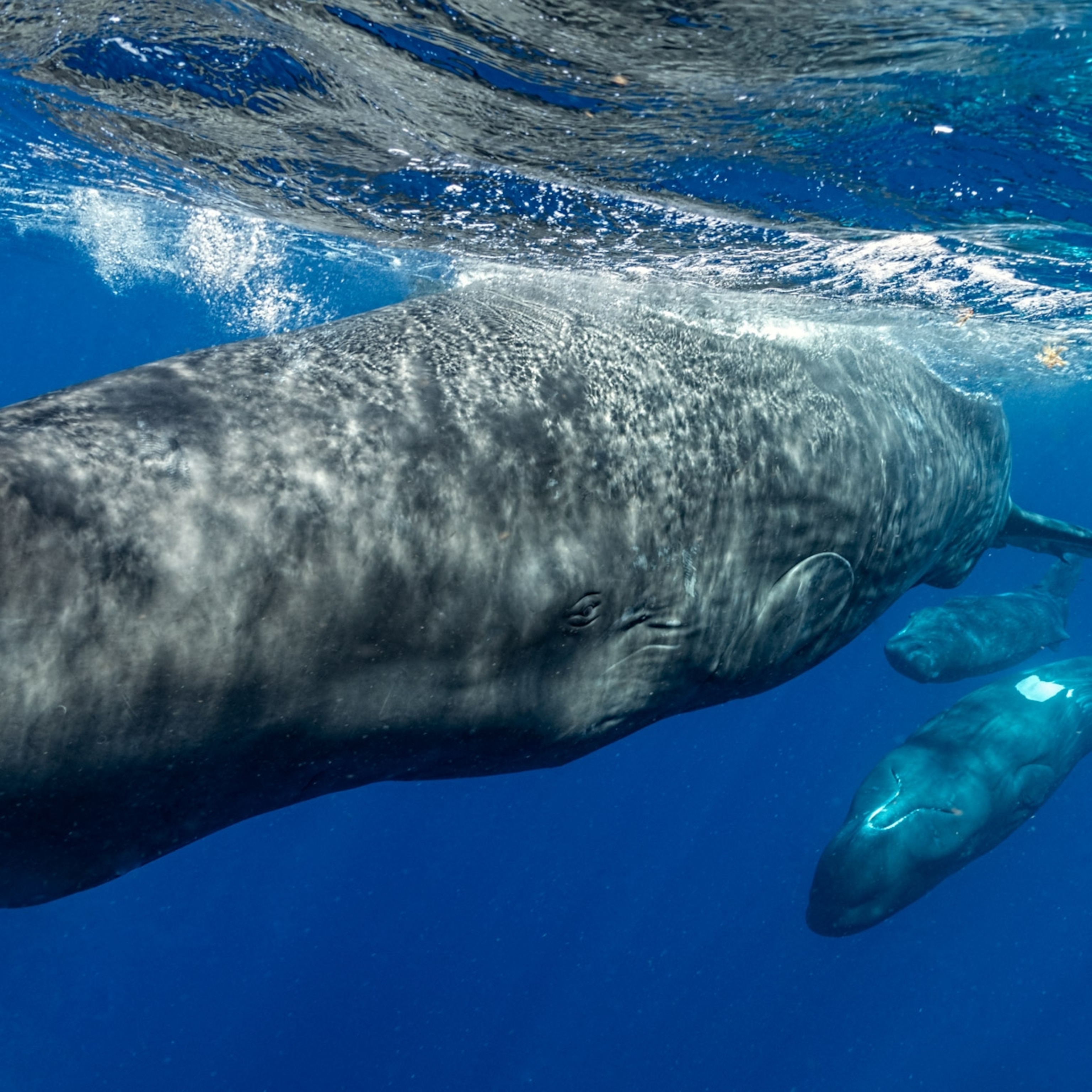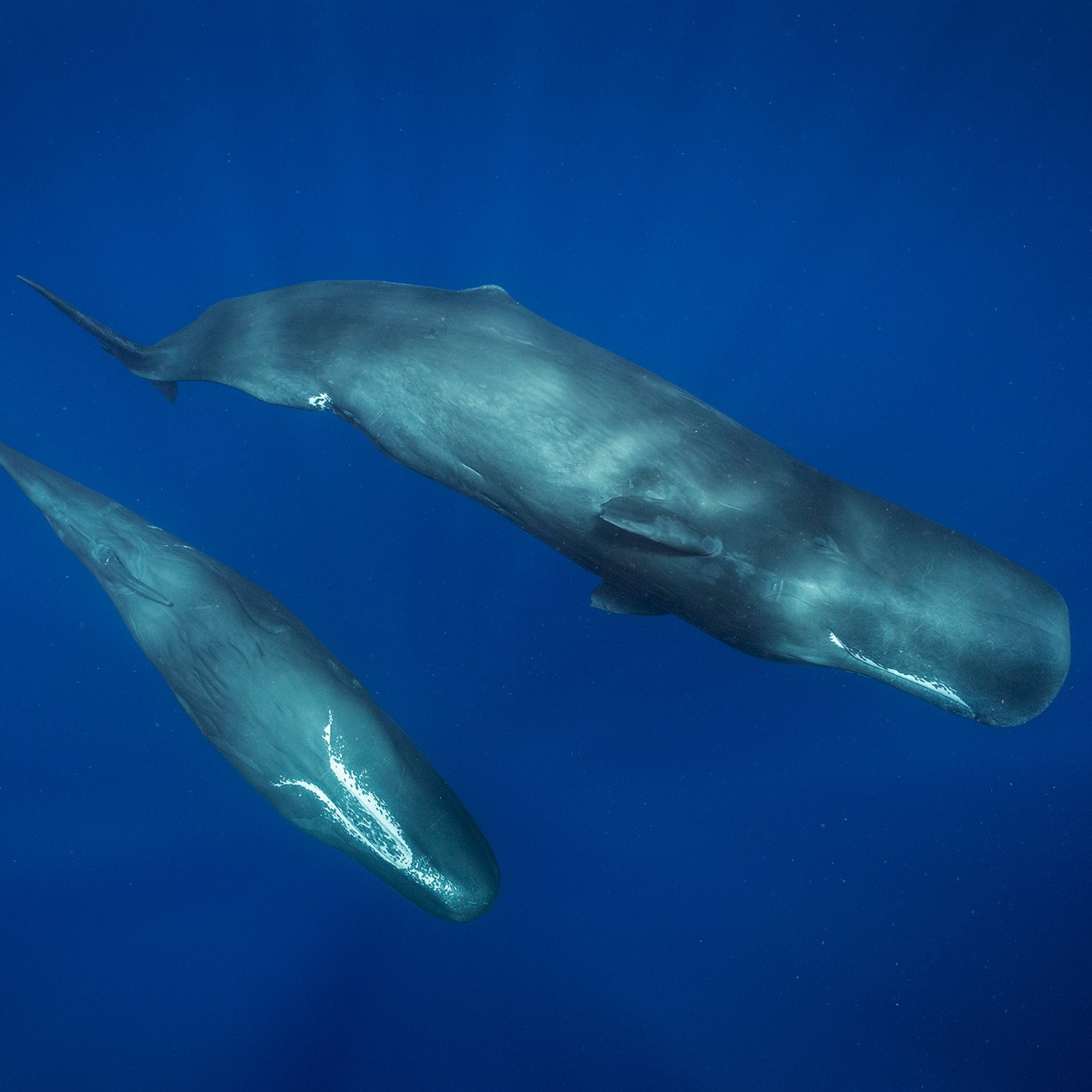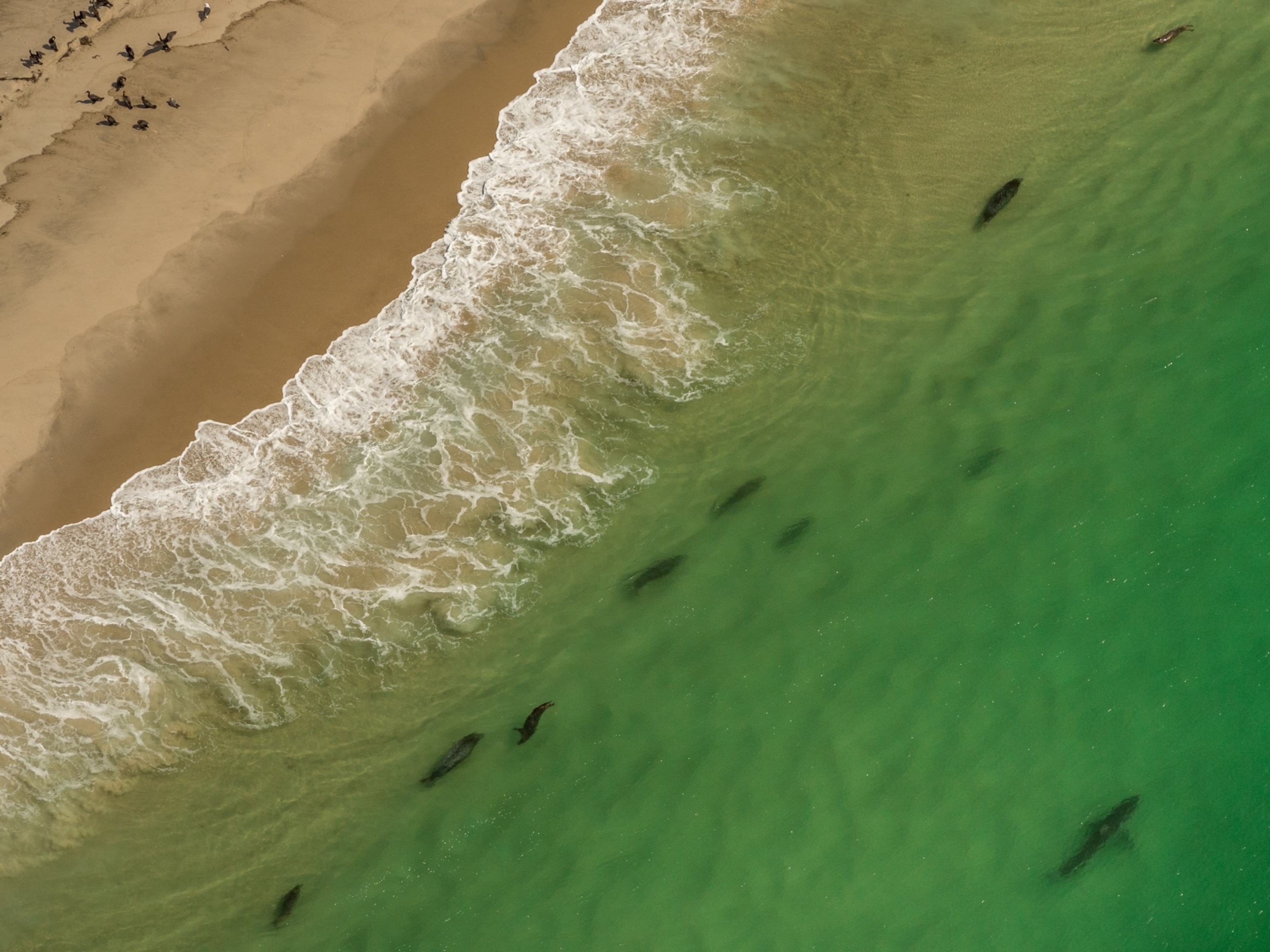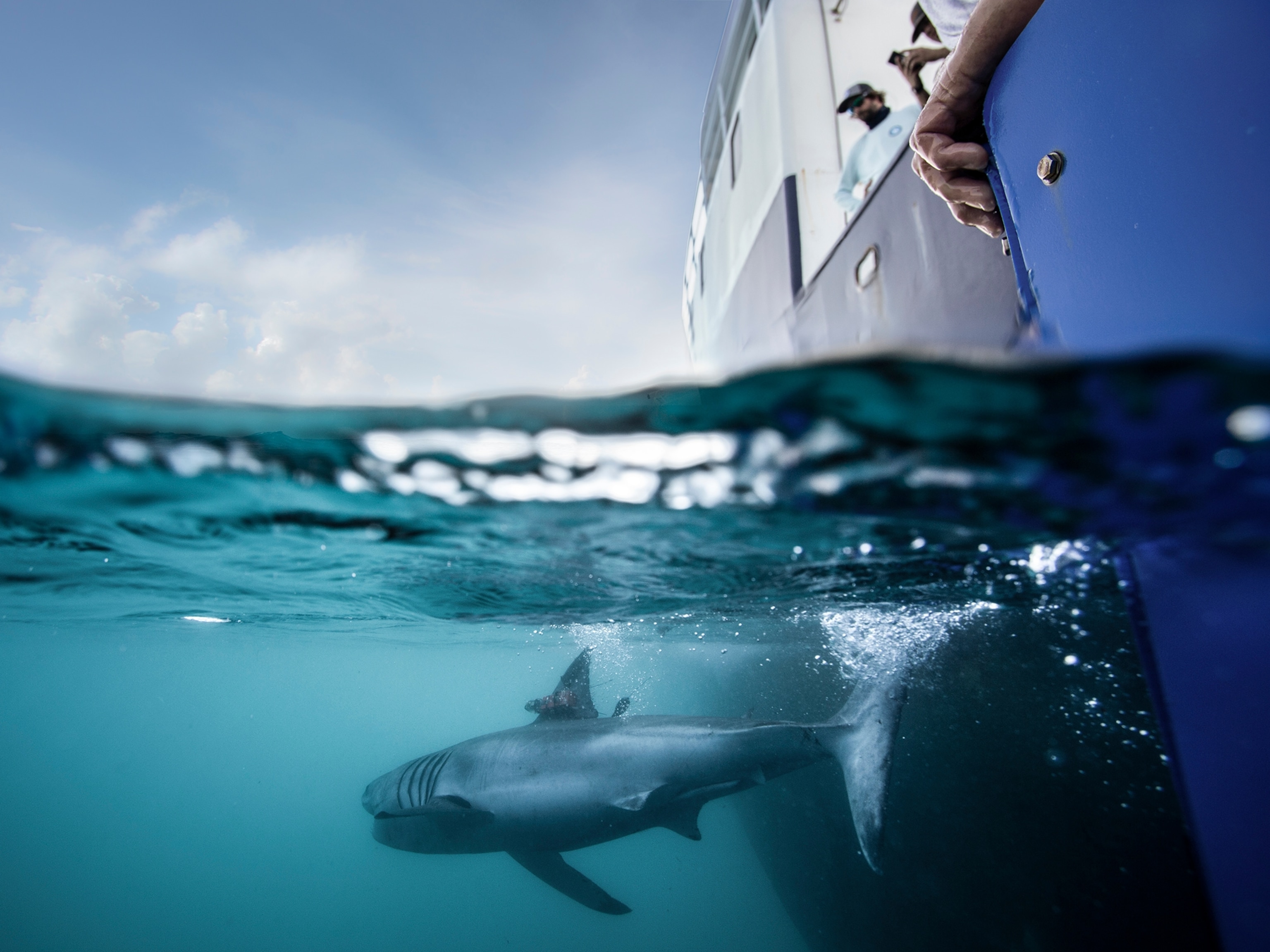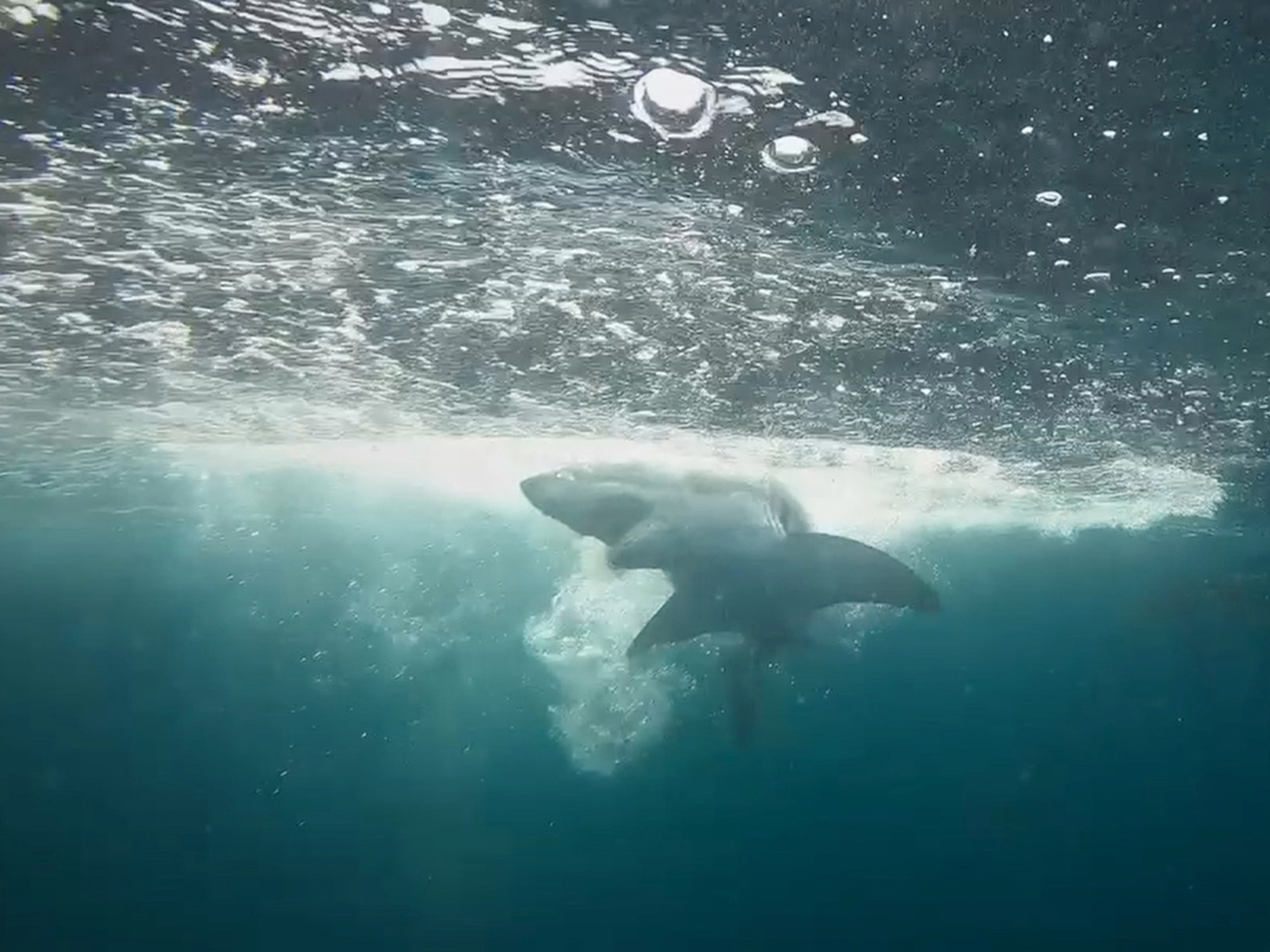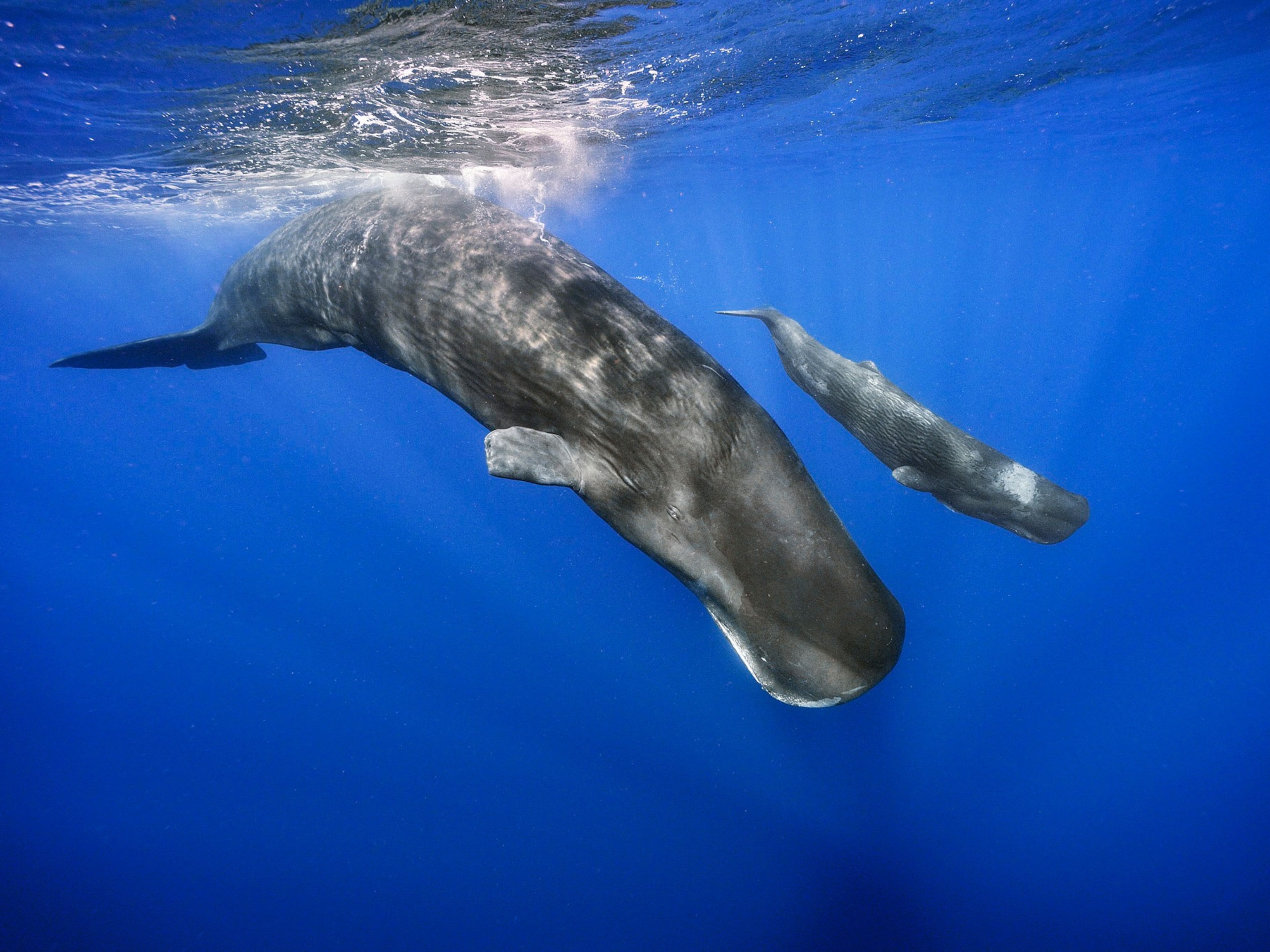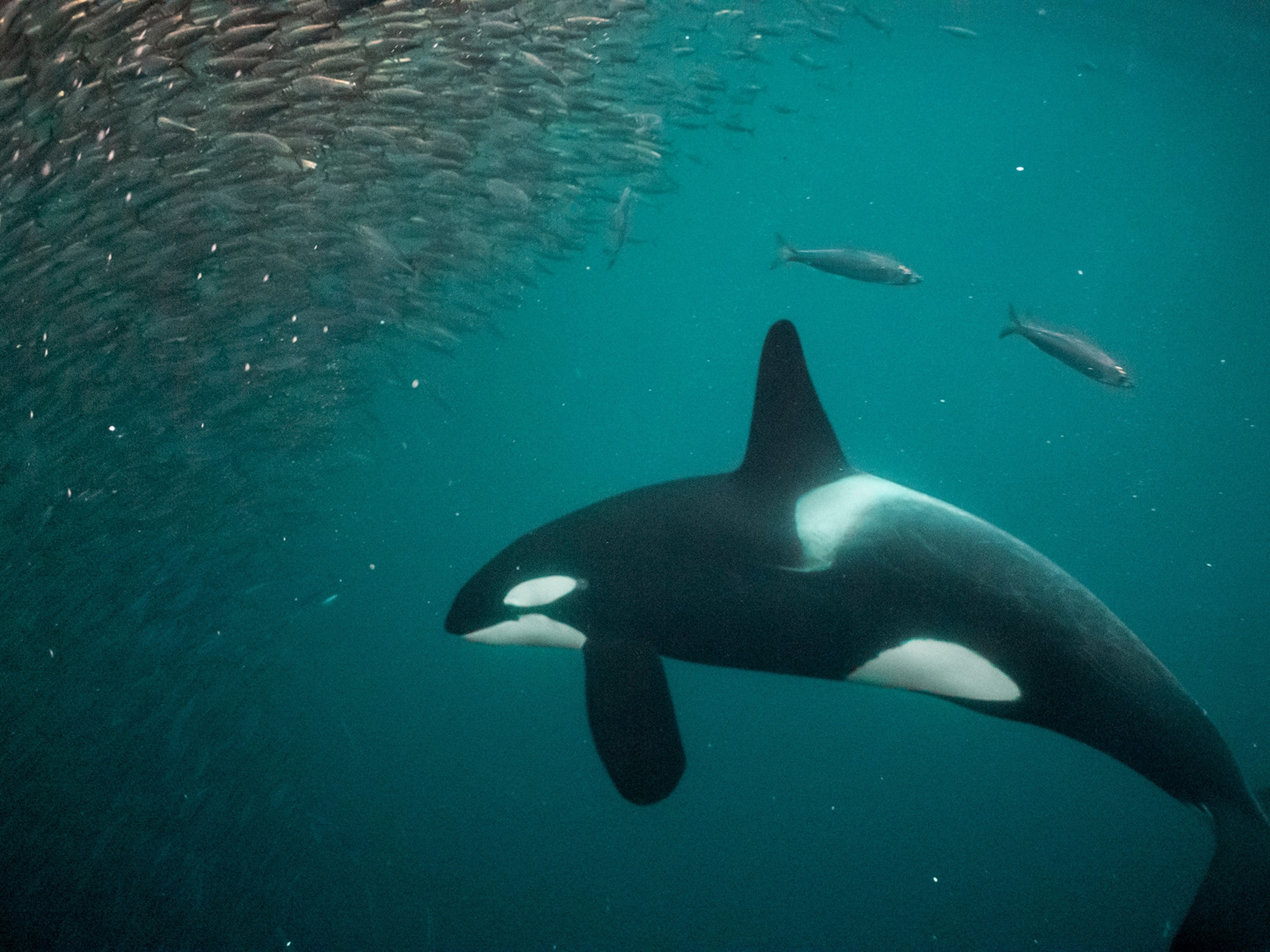Kimberly Jeffries spotted the dead sperm whale from nearly half a mile away—a white mass the size of a bus bobbing in the calm early-morning waters.
It was January 2019, and Jeffries, a Hawaii-based nature and wildlife photographer, had arrived at this spot a couple of miles southwest of Waikiki hoping to catch a glimpse of predators drawn to the floating cetacean feast. Mere moments after she jumped in, something tens of feet below caught her eye: a massive great white shark wending her way up from the deep.
Stretching some 20 feet from tip to tail, it was the famous Deep Blue, one of the largest great white sharks ever caught on film. (Most female great whites average around 15 to 16 feet.) Over three days, Jeffries and her colleagues documented the extraordinary spectacle—while maintaining a respectful distance—as two more mature female white sharks came to chow down on the sperm whale carcass.
“It was one of those rare weeks where there’s no wind; there’s no swells,” Jeffries says. And that meant astonishing underwater views, including photos and video, of Deep Blue and the other great whites feeding, offering a rare glimpse into the lives of these top predators.
The sighting is also unusual for both the number and sex of animals spotted. Female white sharks seem to be mostly solitary creatures. And while great white sharks have likely visited Hawaii for centuries, scientists think there probably isn’t a resident population.
“Are there more females hanging around the Hawaiian Islands than we know about?” wonders Christopher Lowe, director of the shark lab at California State University in Long Beach. “Maybe we just don’t know they’re there and this just provided a rare opportunity to see them.”
While great whites are the most famous shark species, there’s a lot we don’t know—in part because they’re tricky to study, thanks to their elusive nature and wide-ranging migrations, covering thousands of miles per year.
By cataloging such encounters, scientists hope to gain a better understanding of where the creatures spend their time, which helps create more effective conservation measures. The great white, listed as vulnerable on the International Union for Conservation of Nature’s Red List, has many threats including sport fishing and accidental killing as bycatch. (Learn more about white shark deaths in the Pacific.)
Into the deep blue sea
Deep Blue—identified by the crenulations between her grey back side and white belly—was last spotted in 2013, off the western coast of Mexico's Baja California, near Guadalupe Island. This region is a gathering place for sharks, one of several zones thought to be mating grounds for Pacific great whites, explains Nicole Nasby Lucas, a biologist at the Marine Conservation Science Institute who studies Guadalupe’s white sharks and was first given a picture of Deep Blue in 1999.
Male great white sharks spend about six months each year near the coast, starting around late July or early August. During this time, they feast on sea lions and seals as well as likely mate with female whites—though scientists have never caught great whites in the act. (Watch scientists try to put a video camera on a great white.)
Then, around early February, males zip offshore to spend the other half of the year in what’s known as the white shark café, or the shared offshore foraging area—SOFA for short. Roughly the size of Colorado, this zone is located in the open ocean between Hawaii and Baja California.
The female sharks, like Deep Blue, however, keep a bit of a different timetable. Once mature, which is likely around 15 years old, the sharks only return to the nearshore rookeries every other year in step with their lengthy pregnancies. Unlike humans, who carry their babies for around 40 weeks, white sharks are thought to carry their pups for around 18 months.
During most of this time, the female sharks broadly roam out in the North Pacific, feeding wherever they can. And whale carcasses are an important food source food for large white sharks.
“It’s kind of an opportunistic banquet,” says Lowe.
Pregnant or pudgy?
But it’s tough to say whether the trio of great whites are pregnant without testing their blood for hormone levels, Lowe says. Inferences about Deep Blue are particularly challenging, thanks to her robust physique.
When a video of her near Guadalupe Island went viral, her massive size led many to speculate she was pregnant. But female white sharks don’t return to Guadalupe when pregnant, notes Nasby Lucas. All evidence suggests that they go to mate. (Read about another huge great white shark captured off Guadalupe in 2011.)
Lowe thinks the question is further clouded in this latest Deep Blue sighting by her voracious appetite. “When they gorge themselves on these whales, they literally get these kind of Buddha bellies,” he says.
But since it’s common for pregnant great whites to forage offshore, Nasby Lucas says, the “odds are she probably is.”
Give sharks a chance
Though white shark sightings off Hawaii are relatively rare now, populations in the North Pacific seem to be increasing in recent years thanks to several protection measures such as the 1994 ban of net-based fishing in California waters, notes Heidi Dewar, marine biologist at the U.S. National Oceanic and Atmospheric Administration’s Southwest Fisheries Science Center. (Read how white sharks are on the rise off Cape Cod.)
The latest encounter also draws attention to the plight of the great white sharks, and the popular misconception that they're mindless killers. While it's true great whites are apex predators, which demands that they're treated with caution and respect, their killing-machine reputation can sometimes leave the majestic beasts in hot water.
“Anytime you get the public excited about animals in the ocean in a positive way, especially sharks, I think that can only be a good thing for the ocean,” says Dewar.
“The ocean needs some help.”

